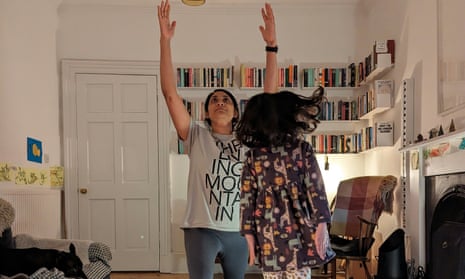The one change that didn’t work: I pounded through exercise classes – until my doctor prescribed rest
I was grief-stricken and exhausted when I began high-intensity interval training. Then came a short, sharp scream in my knees and intense thumping in my chest

Picturing myself during the last three years is a lot like looking at a childhood photo. I know that it’s me, but the gulf between selves is wide. Personally, I was grief-stricken. My mother died in the summer of 2020, alone in a London hospice, while the prime minister and his top officials partied in Westminster. Grief changes a person irreparably; when someone you love dies, they take a version of you with them. And then? A more broken and watchful self is born.
In the weeks and months after my mother’s death, this new version of me developed some strange new habits. I started waking every night at 3am – the hour when my mother died – and could only get back to sleep by listening to Martin Jarvis reading Dickens. I started making my own body cream out of essential oils, raw cocoa butter and 100% unrefined pure natural anxiety – the kind of knit-your-own-earrings-and-sell-them-on-Etsy behaviour at which I would have previously scoffed. I impulse-bought a year’s supply of antihistamines online (adorably, my equally grief-stricken sister did the exact same thing 400 miles away in London). And, most uncharacteristically of all, I started doing high-intensity interval training (HIIT) at home in Leith on the living room rug, surrounded by (and often underneath) my six-year-old, my two-year-old and my eight-year-old rescue staffie. While – and this is where it gets ultra-pandemicky – monitoring my heart rate using a pulse oximeter. I know. What larks.
Most days, I found time to do 20 minutes of squats, jumping jacks, lunges, “Supermans” with lateral raises, you name it. My son, who is autistic, got very into jumping in time to the ticking clock on the bottom of the TV screen. My daughter started to request: “Mummy, do a Joe Wicks” when asked what she fancied playing.
READ RELATED: Want to live to 116? The secret to longevity is less complicated than you think
The short, sharp scream in my knees and intense pounding in my heartbroken chest – topped up by obsessive heart rate monitoring with the oximeter – gave me a vicious kind of pleasure. As I counted down the seconds on the clock, I felt strong, purposeful and alive. Until, of course, I didn’t.
First, my left wrist flared up. Years earlier I had broken it when I fell down an extremely small, gentle hill, when my son was a baby and I was exhausted from the birth and breastfeeding. All those HIIT half-press-ups enraged it, and it started to throb in the evenings. So I started wearing a wrist bandage. Then my upper back, decimated by a couple of decades of typing, started to ache. So, after the kids were in bed, I started fanatically rolling against a wall with a tennis ball while watching The Great Pottery Throw Down and quietly crying about my mum. Finally, a painful lump popped up on my knee. A physiotherapist told me it was a swollen tendon and gently prescribed rest – which is impossible when you’re a mother of young children, especially one with additional needs. The fact is, I was exhausted. I was heartbroken. I was in pain. Rest was not an option in any sustained sense – but perhaps this was not the time to be doing HIIT either.
This year I’ve found another way and replaced HIIT with its YouTube opposite: Yoga With Adriene. Or as I like to call her, my therapist. Now, every single day, no matter how tired, busy, happy or sad I am, I lie on the living room rug (often still beneath the kids and dog) and do about 20 minutes of yoga with Adriene. I’m still exhausted, I’m still grief-stricken, but I’ve never been in less physical pain. It has been nothing short of life-changing. That’s the thing about changes that don’t work. They often lead to the ones that do.
Want to share your story? Tell us a little about yourself and the change that didn’t work for you by filling in the form here
Source: Health & wellbeing | The Guardian
Leave a Reply